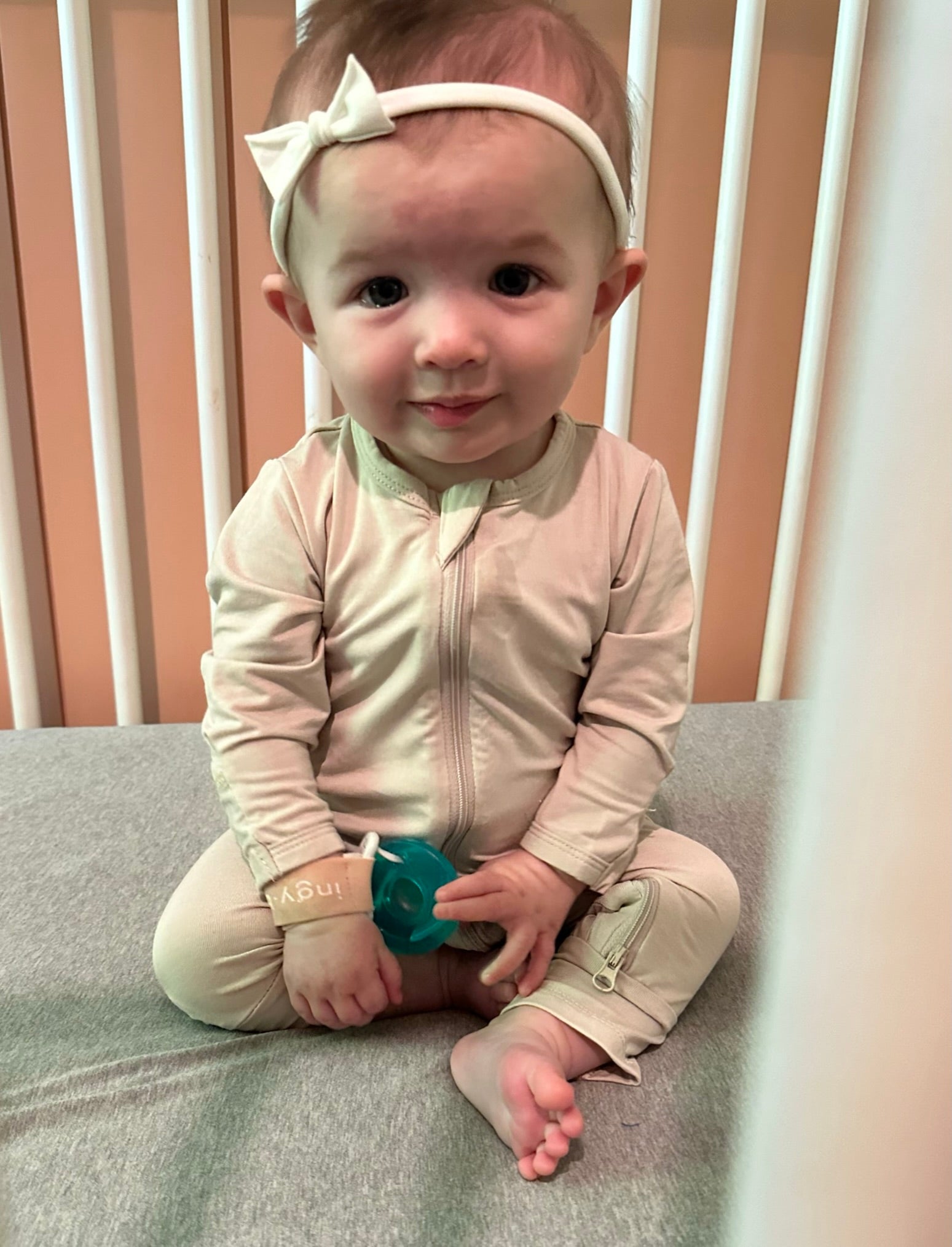
What age do babies begin to crawl?
When your baby is cranky or overtired from learning to crawl this pacifier wristband keeps their newborn pacifier right where they need it whenever they need it.
Crawling
Crawling is an important developmental milestone for babies. It helps to develop sensory systems and motor skills. In a study done by McEwan et al. “indicated that the process of crawling provides a state of eye-hand coordination, vestibular processing, improvement of balance and social maturation.”
What age do babies begin to crawl?
The short answer: around 7-10 months
The long answer: In the social media era, it can be so easy to compare your child’s developmental and cognitive milestones. Although it’s good to know roughly when new things should be happening, try to stop yourself from falling down a rabbit hole!
A contestant from my favorite tv show, Survivor, had a baby the day before our third child was born. I had to stop looking at her Instagram account for a few months because her baby was rolling over, crawling, walking, etc. weeks or months before my daughter. She is my third child and I was still worried she was behind or something was wrong!
Here’s some advice you’d think a third-time mom would already know: Every child is different!
If your child is crawling at 6 months, that’s amazing! If your child is closer to 10 months and isn’t quite there yet, but showing signs of getting close to crawling, know that the age range for when a baby “should” start crawling is just an average. Your child will most likely get there eventually!
However, if you feel like something is truly wrong then don’t hesitate to contact your pediatrician. You know your child best, so if you truly feel your baby has an abnormal delay then they can help assess your baby!
Developmental Leap
Developmental leaps like rolling over, crawling, walking, ect. are HUGE for your tiny baby. It takes a lot of energy and effort to make these things happen. Your baby might start having more frequent night wakings or be overly fussy during these developmental leaps.
Pro tip: Get your baby an infant pacifier and an Ingy Bingy Band to go with it!
When your baby is cranky or overtired from learning to crawl this pacifier wristband keeps their newborn pacifier right where they need it whenever they need it.
Nonnutritive sucking helps calm a fussy baby. A newborn pacifier is a great option to help with this. The problem with newborn pacifiers is that it keeps falling out. It’s not a helpful soothing tool if the newborn pacifier keeps falling out!
A pacifier clip typically helps solve this problem. However, the Ingy Bingy Band is a safe and cost-effective alternative to a pacifier clip!
The Ingy Bingy Band is a pacifier wristband that velcros around baby’s wrist to help them self-soothe from as early as 4 months. Any infant pacifier attaches to this sanity-saving pacifier bracelet. This pacifier wristband saves you time and frustration because your baby will always have access to their newborn pacifier on their own at all times!
In case you’re worried your child might be a late walker, research says, “that the longer the period an infant crawls the higher the ability to perceive space and to search for objects.” Enjoy the crawling days while they last because they will be learning so much every day and using those skills to help them for months and years to come!

